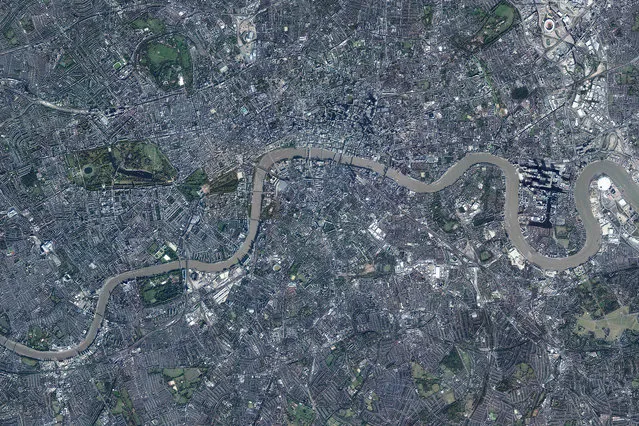
London 51°30′26′′N, 0°7′39′′W. London is the capital and most populous city of Great Britain. Situated on the River Thames, it is the world’s most-visited city as measured by international arrivals and is recognised for being home to a diverse range of people and cultures. More than 300 languages are spoken in the Greater London area. (Photo by Daily Overview/DigitalGlobe, a Maxar Company)
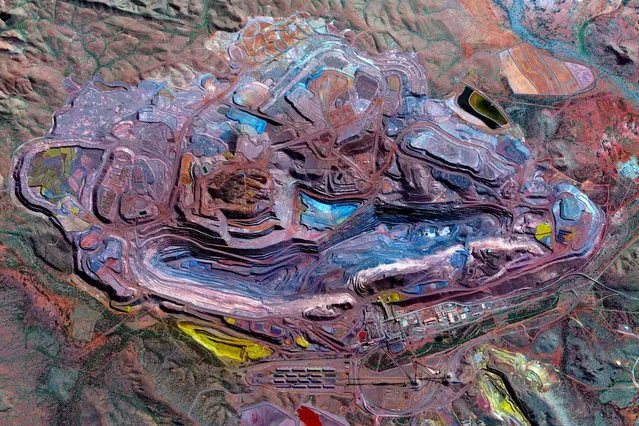
Mount Whaleback iron ore mine 23°21’32.3”S, 119°40’40.1”E. The Mount Whaleback Iron Ore Mine in the Pilbara region of Western Australia. Roughly 98% of the world’s mined iron ore is used to make steel and is thus a significant component in the construction of buildings, automobiles, and appliances such as refrigerators. (Photo by Daily Overview/DigitalGlobe, a Maxar Company)
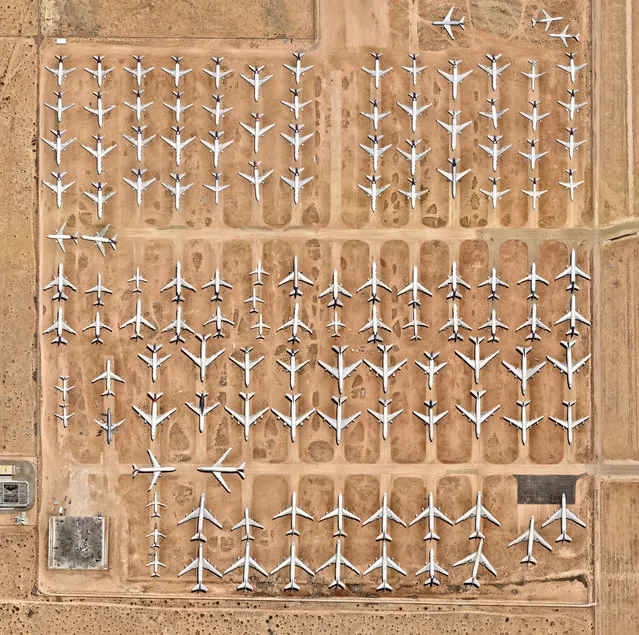
Aircraft boneyard 34°35′51′′N, 117°22′59′′W. The Southern California Logistics airport in Victorville contains an aircraft boneyard with more than 150 retired planes. Because the demand for jumbo jets has dropped significantly in the past two decades in favour of smaller, more affordable twin-engine planes, many large aircrafts have been retired. The dry conditions in Victorville, on the edge of the Mojave Desert, limits the corrosion of metal, meaning planes can be stored here for years while they are stripped for spare parts. (Photo by Daily Overview/DigitalGlobe, a Maxar Company)
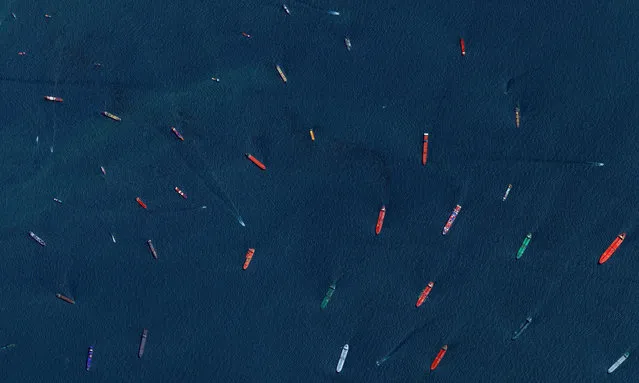
Singapore tankers 1°14’15.6”N, 103°48’23.1”E. Cargo ships and tankers outside of the entry to the Port of Singapore. The facility is the world’s second-busiest port in terms of total tonnage, shipping a fifth of the world’s cargo containers and half of the world’s annual supply of crude oil. (Photo by Daily Overview/DigitalGlobe, a Maxar Company)
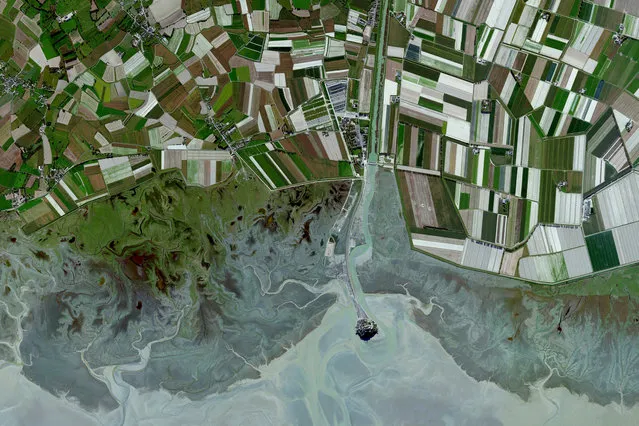
Mont Saint-Michel 48°38′10′′N, 1°30′41′′W. Mont Saint-Michel is a commune located 1km off the coast of Normandy, France. Over the past 600 years, the island has functioned as a prominent monastery (accessible to pilgrims only during low tide), a French fortification that withstood English attacks during the Hundred Years’ war, and a prison. Today, Saint-Michel is one of the most popular tourist attractions in the country. (Photo by Daily Overview/DigitalGlobe, a Maxar Company)
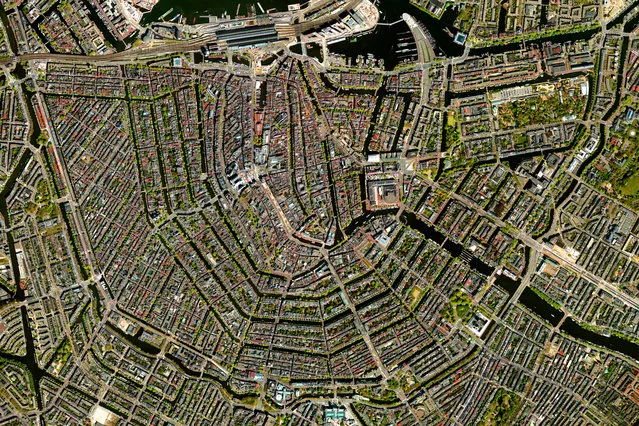
Amsterdam 52°22’15.6”N, 4°53’30.7”E. The canal system of Amsterdam, known as Grachten. In the early 17th century, when immigration was at a peak, a comprehensive plan for the city’s expansion was developed with four concentric half-circles of canals emerging at the main waterfront (seen on the right-hand side of this overview). In the centuries since, the canals have been used for defence, water management, and transport. They remain a hallmark of the city. (Photo by Daily Overview/DigitalGlobe, a Maxar Company)
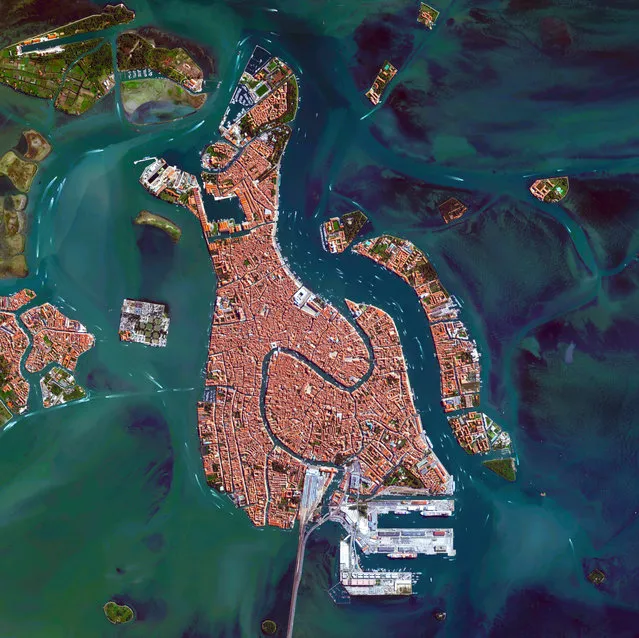
Venice 45°26′15′′N, 12°20′9′′E. Venice, Italy, is situated on 118 islands that are separated by canals and linked by bridges. With tide waters expected to rise to perilous levels in the coming decades, the city has constructed 78 steel gates across the three inlets through which water from the Adriatic could surge into Venice’s lagoon. The panels – which weigh 300 tons and are 92ft wide and 65ft high – are fixed to massive concrete bases dug into the seabed. (Photo by Daily Overview/DigitalGlobe, a Maxar Company)
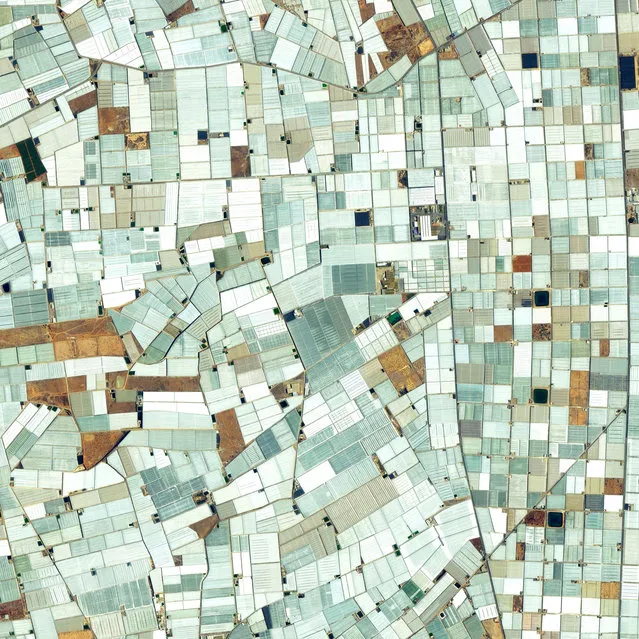
Spanish greenhouses 36°50’25.0”N, 2°28’05.0”W. Greenhouses in Almería, Spain. The structures in this region cover approximately 20,000 hectares of land (more than 75 square miles). The use of plastic covering, known as “plasticulture”, is designed to increase produce yield, increase produce size, and shorten growth time. For a sense of scale, this overview shows roughly six square miles. (Photo by Daily Overview/DigitalGlobe, a Maxar Company)
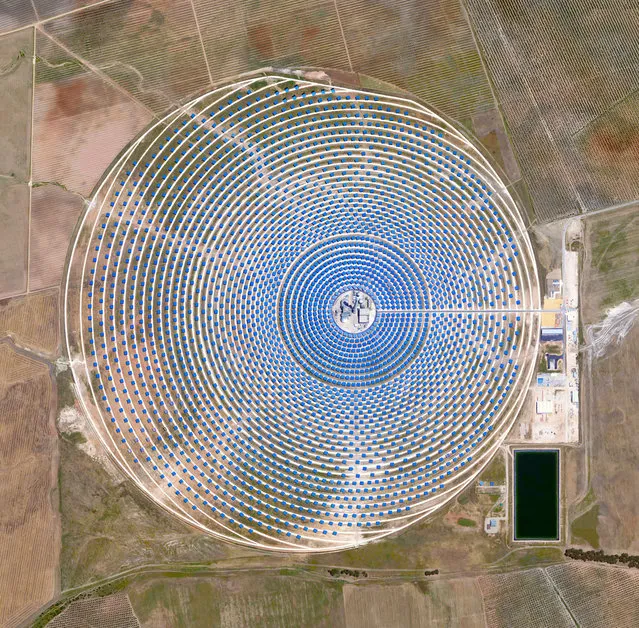
Solar Concentrator 37°33’38.0”N, 5°19’53.1”W. The Gemasolar Solar Concentrator in Seville, Spain, contains 2,650 heliostat mirrors that focus the sun’s thermal energy to heat molten salt flowing through a 460-ft-tall (140m) central tower. The molten salt then circulates from the tower to a storage tank, where it is used to produce steam and generate electricity. In total, the facility displaces approximately 30,000 tonnes of carbon dioxide emissions every year. (Photo by Daily Overview/DigitalGlobe, a Maxar Company)
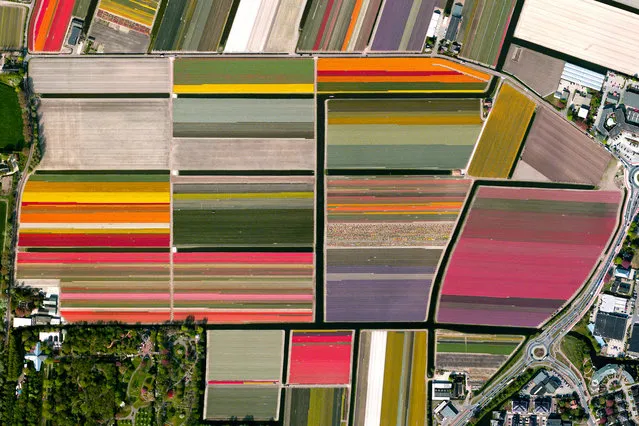
Dutch tulips 52°16’34.9”N, 4°33’25.5”E. Each year, the tulip fields in Lisse, Netherlands, begin to bloom in March and peak by late April. The Dutch produce a total of 4.32bn tulip bulbs each year, more than half of which (2.3bn) grow into cut flowers. Of these, 1.3bn (57%) are sold in the Netherlands and the remainder are exported – 630m bulbs to Europe and 370m elsewhere. (Photo by Daily Overview/DigitalGlobe, a Maxar Company)
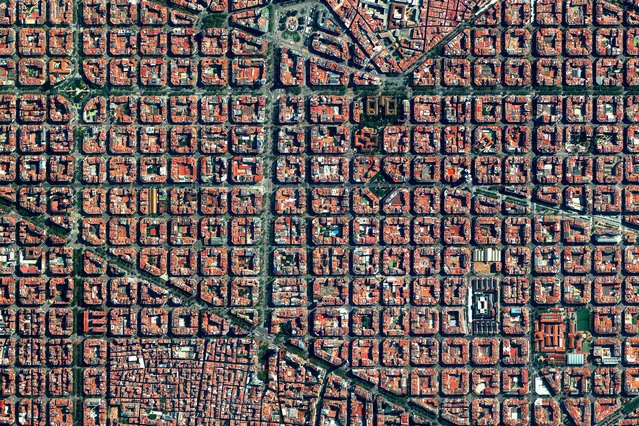
Eixample, Barcelona 41°23′27′′N, 2°09′47′′E. The Eixample district in Barcelona, Spain, is characterised by its strict grid pattern and apartments with communal courtyards. This thoughtful and visionary design was the work of Ildefons Cerdà. His plan features broad streets that widen at octagonal intersections to create greater visibility with increased sunlight, better ventilation, and more space for short-term parking. (Photo by Daily Overview/DigitalGlobe, a Maxar Company)
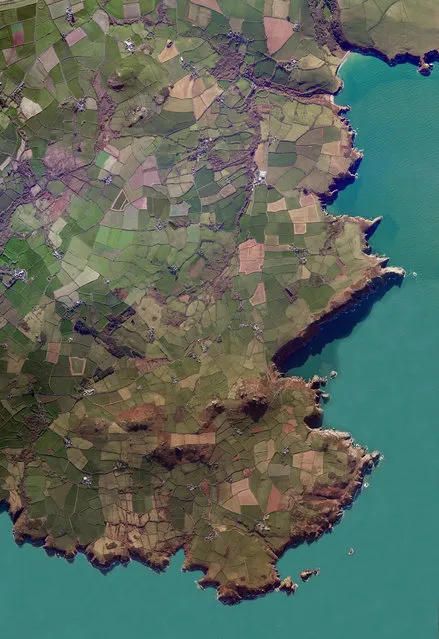
Pembrokeshire 52°00’52.2”N, 5°05’14.0”W. Pembrokeshire is a county in the south-west of Wales. The area is home to Pembrokeshire Coast national park, which includes a 186-mile walking trail known as the Pembrokeshire Coast Path. In the north of the county are the Preseli Hills, a swathe of high moorland with many prehistoric sites and the probable source of the bluestones that were used in the construction of Stonehenge in England. (Photo by Daily Overview/DigitalGlobe, a Maxar Company)
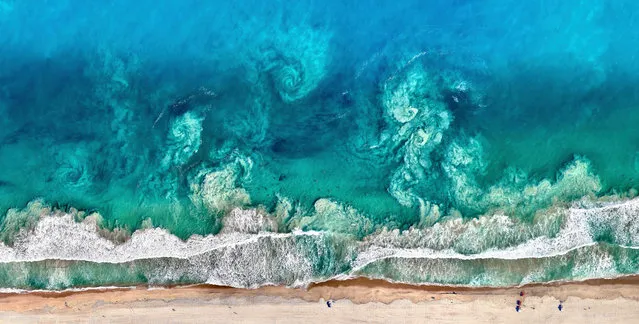
Perth waves 31°57’04.5”S, 115°45’14.9”E. The beaches in Perth, Australia, are world-famous for their beautiful white sand and clear blue water. When seen from above, we can also discover the currents and swirls that are created here when the waves hit offshore reefs. While the patterns in the water may be beautiful, they also create powerful undertows that can be perilous for surfers and swimmers. (Photo by Daily Overview/DigitalGlobe, a Maxar Company)
16 Nov 2018 00:03:00,
post received
0 comments
